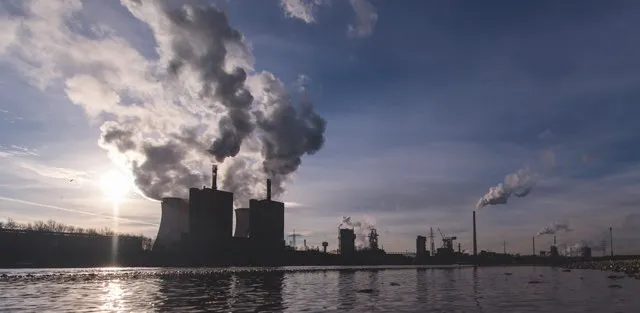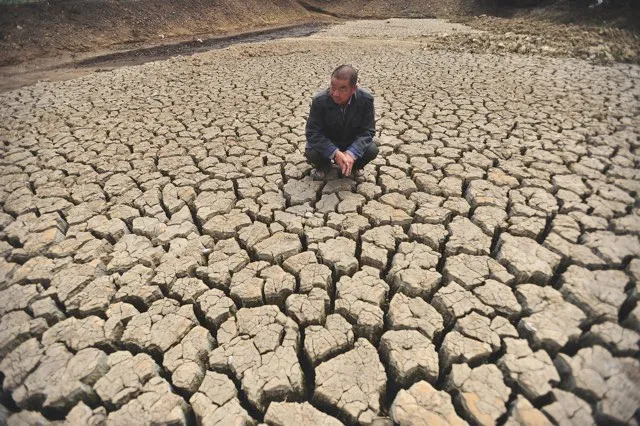Update 17/06/19: This article has been updated to include the alternative view by Peter Irvine, which originally appeared in the April 2018 issue of BBC Focus Magazine.
Climate change is a problem in desperate need of a solution. According to the authoritativeCarbon Action Tracker, even if all nations honour their pledges to cut their greenhouse gas emissions, the globe will still warm by around 3.2°C by 2100 – with catastrophic consequences for humanity and the animal kingdom.
If cutting greenhouse gas emissions isn’t enough, is it time for a plan B? Recent times have seen a surge of interest in geoengineering: China has recently embarked on a substantial research plan, while in the US, Prof David Keith of Harvard University is planning tolaunch a high-altitude balloonthis year to test the feasibility of spraying reflective particles into the stratosphere. Meanwhile, other researchers are looking at the possibility of increasing the brightness of marine clouds to reflect more sunlight back into space.
Read more:
But there are a number of risks, and not just because we’re unsure about how effective these interventions would be. There are fears that one country’s efforts to solve its climate problem could inadvertently mess up the weather elsewhere, creating a new source of political tension. And ultimately, this leads to a worrying question: could we be looking at the dawn of a new kind of war – one fuelled by a battle for dominance over our planet’s climate system?
The problem with geoengineering
Geoengineering is defined as a deliberate, large-scale intervention in the climate system, and schemes come in two varieties. The first type aims to remove carbon dioxide from the atmosphere. This can be done by capturing it from the air using natural or artificial means; making biochar (a type of charcoal) from vegetation waste; or adding lime to the oceans to reduce their acidity and therefore maintain their ability to absorb carbon dioxide from the atmosphere. The greatest hurdle for these schemes lies in finding somewhere to permanently store the huge quantities of carbon. The deep ocean offers one possible solution, but we’re still a long way from a feasible method of doing this.
The second kind of geoengineering scheme is known as solar radiation management or albedo modification. These techniques look to reflect a small amount of sunlight away from the planet to reduce warming. Some of these proposals are relatively benign, but also pretty ineffective. The technology receiving most attention – and the one most likely to be deployed because it’s cheap and feasible – is known as sulphate aerosol spraying.

The idea is to spray sulphur dioxide or sulphuric acid into the stratosphere or upper atmosphere to form tiny particles that reflect an extra 1 to 3 per cent of incoming solar radiation back into space, thereby cooling the planet in the way that large volcanic eruptions are known to do.
In effect, humans would be installing a radiative shield between the Earth and the Sun: one that could be adjusted by those who control it to regulate the temperature of the planet. The models indicate that if we reduced the amount of sunlight reaching the planet, the Earth would coolfairly quickly, although with less effect at the poles, which are warming more rapidly.
A 2010 study published in Nature Geoscience found that, under a solar geoengineering regime, there would be different responses across large regions, making consensus about how much to reduce incoming solar radiation difficult, if not impossible.
Some atmospheric scientists, like Dr Alan Robock at Rutgers University, argue that the complexity of the climate system means that it’s difficult to draw firm conclusions about the consequences of such a radical intervention. They point out that the chemistry of the upper atmosphere – including the ozone layer – is complicated and poorly understood. Reducing the amount of sunlight reaching the Earth in a computer model may give little clue as to what would happen in the actual climate system if a layer of sulphate aerosols were injected into it.
Read more:
One worry is that, combined with increased water vapour as a result of global warming, adding sulphates to the upper atmosphere could be a lethal cocktail for ozone loss, speeding up chemical reactions that destroy this crucial gas. Other studies indicate that, depending on the kind of aerosol spraying programme, the South Asian and East Asian monsoons could be disrupted. Tropical rainfall depends on differences between temperatures on land and sea, and some models show that by changing the temperature ratio between land and sea, solar geoengineering could suppress monsoon rains, affecting food supplies for millions of people.
However, global warming itself is changing precipitation patterns around the world (broadly speaking, dry regions are becoming drier and wet ones wetter) so a solar shield may improve rainfall in some regions that are drying out. It’s here we get to some of the most difficult issues associated with geoengineering.
Unknown unknowns
If the most sophisticated models cannot provide a firm answer regarding how solar geoengineering would affect the actual global climate, nor can experiments. Only full-scale implementation would provide a clear idea of its impacts.
Even then, we’d need at least 10 years of global climate data before we had enough information to separate out the effects of sulphate aerosol spraying from natural climate variability and, indeed, from the effects of human-induced climate change. To compound the risks, if after 10 years we had accumulated enough data to decide that our intervention was not a good idea, it may be impossible to terminate the solar shield. Why should this be so?

For some time, ecologists have known that the rate at which the globe warms is a greater threat to ecosystems than the amount of warming, because a slower rate of warming gives plants and animals more time to adapt. If the solar shield causes some nasty unintended effects (including conflict between nations), removing it suddenly would cause the suppressed warming ‘rebound’. It’s been estimated that if warming occurs at a rate of 0.3°C per decade (well within the estimated rebound range) then only 30 per cent of ecosystems could adapt and survive.
So we may find that, once deployed, removing the shield becomes too risky; we’d be stuck with it. The danger would be multiplied if we failed to take the opportunity to cut greenhouse gas emissions sharply while the shield was in place. This is perhaps the greatest hazard of going down this path.
Politics, politics
Some technologies are inherently political in the sense that they increase the power of those who control it and reduce the power of those excluded from it. Imagine if the US government decided to install a solar shield that allowed it to regulate the climate. The government would wield great power over all those US industries that depend on the weather, while also being able to influence the climate in other parts of the world, creating immediate strategic tension.
Paradoxically, solar geoengineering can also be seen as a means of preserving social and political structures that are threatened by measures to cut carbon emissions. Instead of taxing fossil fuels, banning coal mining and restricting air transport, those profiting from these activities might welcome a technofix like sulphate aerosol spraying.

Indeed, in the US, conservative think tanks that have been at the forefront of climate science denial have shown an interest in solar geoengineering. It’s cheap and protects any vested interests. Geoengineering promises to turn a drastic failure of the free enterprise system into a triumph of human ingenuity. And they are more inclined to agree with Prof David Keith that an artificial Earth shaped by humans is not intrinsically inferior to a natural one.
At a deeper level, the implicitly autocratic nature of global climate regulation has an appeal to those on the political right just as it frightens those on the democratic left. It’s hard to imagine a government in charge of a solar geoengineering project holding a referendum on whether the Earth’s temperature should be reduced by one degree or two.
The control of the Earth’s weather could become the responsibility of a kind of ‘Climate Regulation Agency’, staffed by a technocratic elite whose task would be to continuously collect a vast array of weather information, feed it into data systems, separate out the effects of the solar shield from other factors, and advise the relevant department as to how many planes loaded with sulphur dioxide should be sent up next week and where they should dump their loads.
Climate wars
Military planners recognise climate change as a ‘threat multiplier’. US defence chiefs, among others, have incorporated a changing climate into their military planning and equipment supply. Climate change is expected to create political instability; indeed, some experts believe that climate change-induced drought, high food prices and migration to cities nudged Syria into civil war.
If that’s true – and we can only guess at how much conflict there might be in a world 3°C warmer – mitigating warming by geoengineering ought to create a more peaceful world. But it’s not so straightforward.
When hit by a devastating flood, drought or storm, a community will tend to see it as an act of God – a natural event that it just has to cope with. But what if we believed that the death and destruction were caused not by nature but by someone manipulating the weather? If another nation were engineering the climate, its politicians’ denials would fall on deaf ears, and not just because humans naturally look for someone to blame. If a nation had embarked on a system-altering form of climate engineering like sulphur dioxide spraying, it would be virtually impossible to work out whether an extreme weather event somewhere in the world was due to natural variability, human-induced climate change or climate manipulation. And climate manipulation would quite likely get the blame.

The government of China, faced with a catastrophic drought in the north of the country, might decide its survival demanded rapid global cooling. But sending up planes to spray sulphur dioxide might deprive India and Pakistan of their monsoon rains, bringing on famine. Three nuclear-armed nations would then be in conflict over weather patterns that affect the survival of millions of their citizens.
It’s hard to know who might first be tempted to regulate the global climate. Given the severe environmental and geopolitical risks, and the deep ethical divide over whether humans should ‘play God’, governments in democratic countries may be hamstrung. Authoritarian leaders who do not need public approval to act may have a freer hand. Do we want Vladimir Putin or Xi Jinping controlling our weather?
Listen to the Science Focus Podcast:
- How can we save our planet? – Sir David Attenborough
- What’s going on with the weather? – Dann Mitchell
A dictator with his hand on the global thermostat is a scary prospect. But imagine if several poorer nations (let’s say Bangladesh, Tuvalu, the Maldives and Ethiopia) clubbed together and declared: “The rich countries that caused global warming promised to cut their emissions, but they have not done so. Our people are dying, so we must take unilateral action. We are sending up a fleet of planes to spray sulphur dioxide.”
Now the moral calculus leaves us uncertain what to think. Don’t they have the right to save themselves from an existential threat, even if by risky means? What would it mean for floods and storms in other countries? Would the United States or China be entitled to shoot down their planes?
Reaching a consensus to regulate the Earth’s climate would, in the words of a 2013 study, “pose immense challenges to liberal democratic politics”. But then, liberal democratic politics does not have a great record responding to climate change, either. The elected president of the US, Donald Trump, has announced that his country will be pulling out of the Paris Agreement, an action that will slow emissions reductions and expose millions of people, especially poorer individuals, to the devastating effects of a warming world.
In the circumstances, the only acceptable answer is a global agreement to regulate research into geoengineering. If it ever comes to deployment, conflict could be avoided only if an inclusive international institution makes the decision. Without it, one nation would control the climate of others, and those others will be tempted to engage in their own ‘counter-geoengineering’. And then we really are in trouble.
An alternative view
Peter Irvine is a climate scientist at Harvard University who researches solar geoengineering. He argues that the benefits of the technology could outweigh the risks
I’ve been working since 2009 to understand the potential and limits of geoengineering, and Clive Hamilton paints a picture of this technology that I simply do not recognise. To address climate change, carbon dioxide emissions will have to be driven to zero, but however fast emissions are cut, the climate will still warm considerably over the 21st Century. It’s here that stratospheric aerosol geoengineering could prove an extremely useful tool.
Higher temperatures mean more intense heatwaves; they mean air carries more moisture, causing more intense floods; and they mean more melting of the glaciers, driving up sea levels. Reducing temperatures will reduce these risks, and our work has shown that it doesn’t make much difference whether this is done by lowering emissions or by cooling from solar geoengineering. This doesn’t mean geoengineering should be a replacement for emissions cuts – indeed, it may introduce some new risks of its own – but it would help to offset some of climate change’s worst impacts.
Clive points to the potential dangers of geoengineering reducing monsoon rainfall, but his picture is incomplete. Water availability depends not only on how much rain falls but also on how quickly it evaporates in the heat of the day. The same climate models that show that geoengineering would reduce rainfall also show that it would reduce evaporation, potentially leading to more, not less, water availability for people, crops and ecosystems.
Clive also claims that, because climate control would require detailed technical knowledge to manage, it would somehow lead to the technocrats taking over. Yet our lives depend on the technocrats who manage our electricity grids, our water supply, our transport systems and our internet, and still our societies remain robustly democratic.
Clive portrays geoengineering as an idea born of Cold War hubris and pushed by right-wing climate deniers. Instead, I see a well-intentioned proposal that is being critically evaluated by hundreds of researchers around the world, from disciplines as diverse as engineering, economics and international law. Rather than coming from shadowy right-wing think tanks of fossil-fuel interests, funding for geoengineering research comes mostly from governments (which reflects a societal demand for this knowledge) and environmentally minded philanthropists.
Outside of academia, there are also exciting developments. The Solar Radiation Management Governance Initiative is an international NGO that’s working to empower scientists and policy makers in developing countries to engage with geoengineering, while in New York, the Carnegie Climate Geoengineering Governance Initiative (led by Janos Pasztor, the former climate science adviser to Ban Ki-moon) aims to bring this topic to the attention of international policy makers at the UN and beyond.
The ratification of the Paris Agreement and the stunning developments in solar and wind power in recent years show that the world has the will and is developing the tools to tackle climate change. Even so, international cooperation in this area remains a notoriously difficult process: the benefits of cutting emissions are global and will be felt in the long run, whereas the costs are felt here and now. So even though all countries agree that they want to limit the impacts of climate change, each country benefits the most by doing the least.
For geoengineering, the picture is completely different. The costs of geoengineering are low, its effects will be felt quickly, and they’ll be global in scope. This means that governments will have a real incentive to work together to realise the potential benefits of geoengineering.
So the reality of this technology is rather different from the worst-case scenario pictured by Clive Hamilton. We now need a concerted international and interdisciplinary research effort into geoengineering, and we shouldn’t let pessimistic fears get in the way of exploring an idea that might really help in the fight against climate change.
- This article was first published in April 2018.
Follow Science Focus onTwitter,Facebook, Instagramand Flipboard
